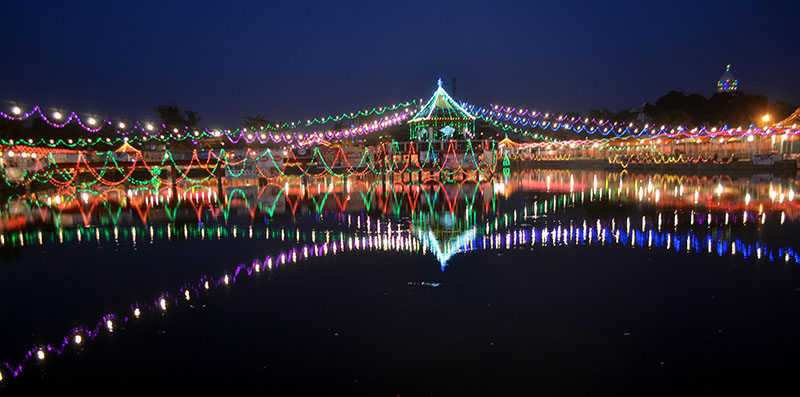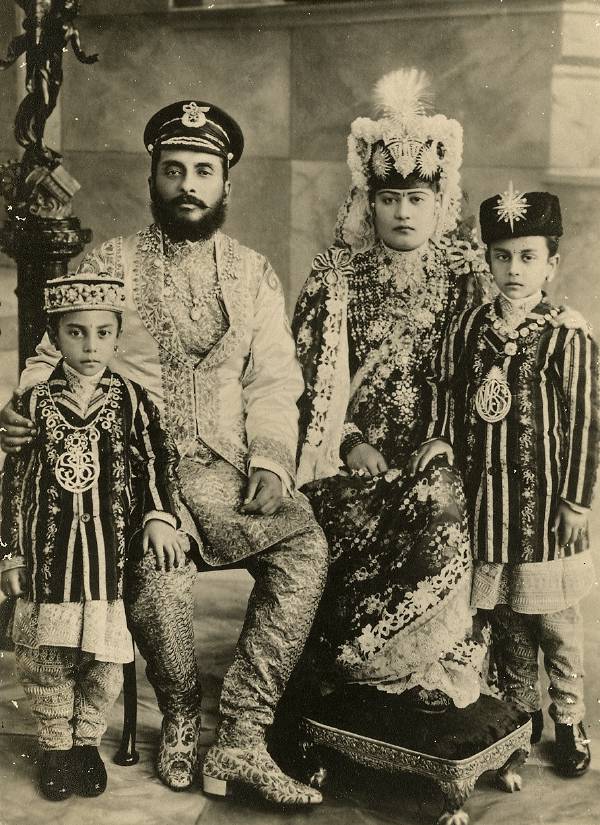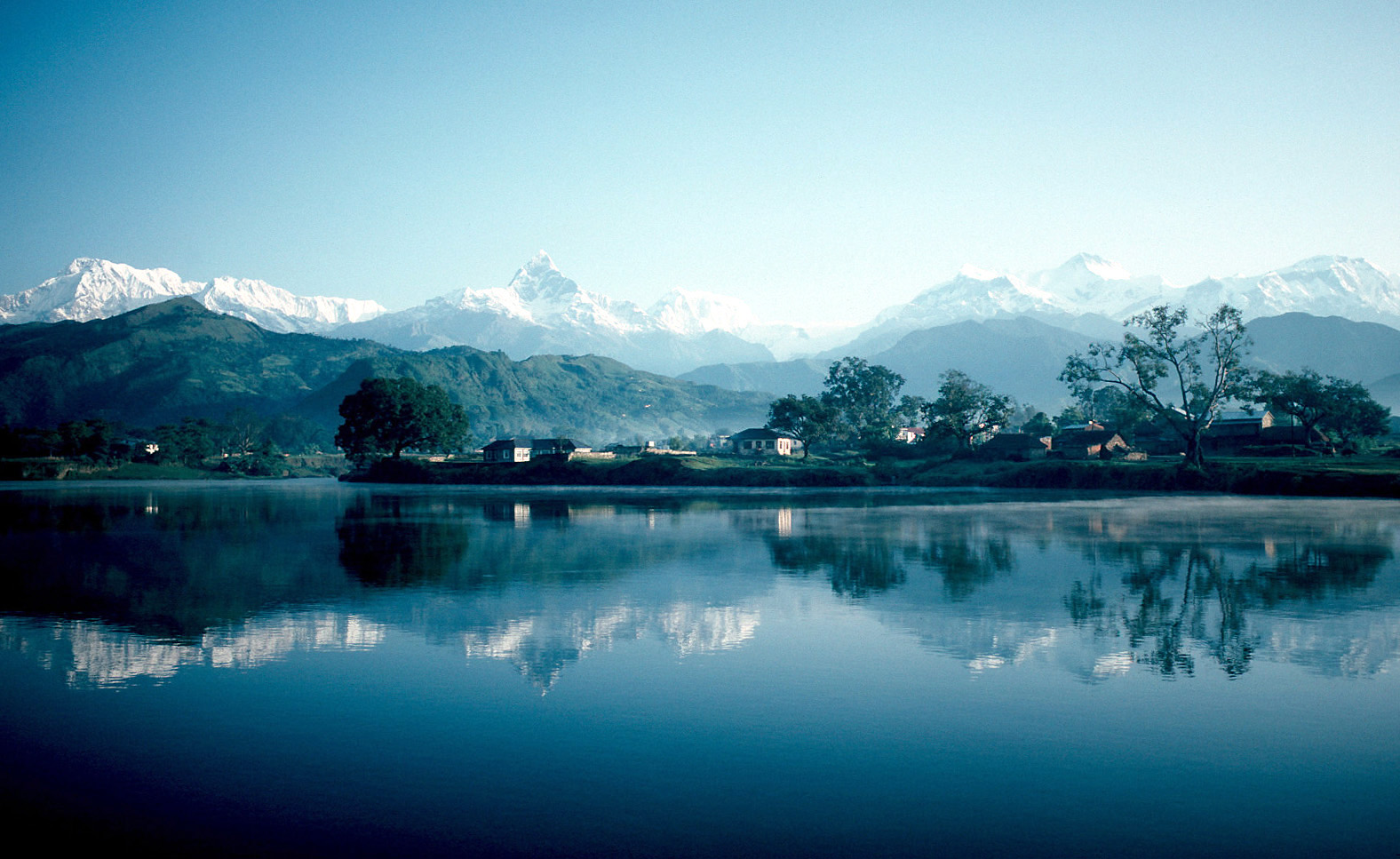|
Birganj
Birgunj ( ne, वीरगञ्ज) is a metropolitan city in Parsa District in Madhesh Province of southern Nepal. It lies south of the capital Kathmandu, attached in the north to Raxaul in the border of the Indian state of Bihar. As an entry point to Nepal from Patna, Birgunj is known as the "Gateway of Nepal". It is also called "Commercial capital of Nepal". The town has significant economic importance for Nepal as most of the trade with India is via Birgunj and the Indian town of Raxaul. Tribhuvan Highway links Birgunj to Nepal's capital, Kathmandu. Birgunj was one of the first three municipalities formed during the rule of Prime Minister Mohan Shumsher Jang Bahadur Rana. It was declared a Metropolitan City on 22 May 2017 along with Biratnagar and Pokhara. Birgunj is one of the largest city in Nepal and largest in Madhesh Province. Birgunj is the fifth most populated metropolis of the nation. Etymology Birgunj was established as a conglomerate of several villages in and a ... [...More Info...] [...Related Items...] OR: [Wikipedia] [Google] [Baidu] |
Parsa District
Parsa District ( ne, पर्सा जिल्ला), a part of Madhesh Province in Terai plain, is one of the seventy-seven districts of Nepal. The district, with Birgunj as its district headquarters, covers an area of and has a population (2001) of 497,219. According to the locals, Parsa is named after Parashnath temple situated in Mahuwan. Etymology According to locals, the name of the district is derived from the Parsagadhi fort, where the Nepali Gorkhali Soldiers defeated British Soldiers. Geography and Climate Demographics At the time of the 2011 Nepal census, Parsa District had a population of 601,017. Of these, 78.1% spoke Bhojpuri, 6.4% Nepali, 5.1% Maithili, 3.8% Tharu, 2.2% Urdu, 1.3% Tamang, 0.8% Rajasthani and 0.7% Newari as their first language. Notable people * Ajay Chaurasiya - Nepali Congress leader, former minister and former Member of House of Representatives/Constituent Assembly * Ajay Kumar Dwivedi - Nepali Congress leader and Member of Co ... [...More Info...] [...Related Items...] OR: [Wikipedia] [Google] [Baidu] |
Raxaul
Raxaul is a sub-divisional town in the East Champaran district of the Indian state of Bihar. It is situated at the India-Nepal border with Birgunj city (Nepal). Raxaul is a major railway junction. The Indian border town of Raxaul has become one of the busiest towns for heavy transportation due to high trade volume. Almost 56% of the total products of Birgunj are exported to the Indian state of Bihar through this route. Demographics India census, Raxaul Bazar had a population of 55,532. Males constitute 54% of the population and females 46%. Raxaul Bazar has an average literacy rate of 75.62%, higher than the state average of 61.80%: male literacy is 82.14%, and female literacy is 68.25%. In Raxaul Bazar, 16.21% of the population is under 6 years of age. People communicate with each other in the Bhojpuri and Hindi languages. History Earlier the name of the town is used to be Falejarganj. Transport Raxaul is the only city that is connected with Nepal. Birgunj railway stat ... [...More Info...] [...Related Items...] OR: [Wikipedia] [Google] [Baidu] |
Tribhuvan Highway
The Tribhuvan Highway () connects the outskirts of Kathmandu, the capital of Nepal, with Birganj/Raxaul on the Nepal-India border. NH 28 and NH 28A links Raxaul with Lucknow/Barauni and other locations in India. History Known informally as Byroad, the Tribhuvan Highway is the oldest and the first highway of Nepal and it links Naubise, west of Kathmandu with the Indian border at Birgunj/Raxaul. It was named in memory of King Tribhuvan (1906–1955). Its construction was completed with Indian assistance in 1956, and it provided the first serviceable road connection with India. The first regular daily bus service on the highway was operated by Nepal Transport Service in 1959. The bus route ended at the railway station at Amlekhganj, from where travellers took the Nepal Government Railway (NGR) the rest of the way to Birgunj and Raxaul. Before Tribhuvan Highway was built, travelers used the historic trade route passing through Kulekhani, Chitlang, Chandragiri Pass and Thankot. ... [...More Info...] [...Related Items...] OR: [Wikipedia] [Google] [Baidu] |
States And Territories Of India
India is a federal union comprising 28 states and 8 union territories, with a total of 36 entities. The states and union territories are further subdivided into districts and smaller administrative divisions. History Pre-independence The Indian subcontinent has been ruled by many different ethnic groups throughout its history, each instituting their own policies of administrative division in the region. The British Raj mostly retained the administrative structure of the preceding Mughal Empire. India was divided into provinces (also called Presidencies), directly governed by the British, and princely states, which were nominally controlled by a local prince or raja loyal to the British Empire, which held ''de facto'' sovereignty ( suzerainty) over the princely states. 1947–1950 Between 1947 and 1950 the territories of the princely states were politically integrated into the Indian union. Most were merged into existing provinces; others were organised into ... [...More Info...] [...Related Items...] OR: [Wikipedia] [Google] [Baidu] |
Census
A census is the procedure of systematically acquiring, recording and calculating information about the members of a given population. This term is used mostly in connection with national population and housing censuses; other common censuses include censuses of agriculture, traditional culture, business, supplies, and traffic censuses. The United Nations (UN) defines the essential features of population and housing censuses as "individual enumeration, universality within a defined territory, simultaneity and defined periodicity", and recommends that population censuses be taken at least every ten years. UN recommendations also cover census topics to be collected, official definitions, classifications and other useful information to co-ordinate international practices. The UN's Food and Agriculture Organization (FAO), in turn, defines the census of agriculture as "a statistical operation for collecting, processing and disseminating data on the structure of agriculture, covering th ... [...More Info...] [...Related Items...] OR: [Wikipedia] [Google] [Baidu] |
Madhes Movement
Madhesh Movement ( Nepali: मधेस अान्दोलन) was a political movement launched by various political parties, especially those based in Madhes, for equal rights, dignity and identity of Madhesis Tharus, Muslims and Janjati groups in Nepal. In nearly a decade, Nepal witnessed three Madhesh Movements - the first Madhesh Movement erupted in 2007, the second Madhesh Movement in 2008 and the third Madhesh Movement in 2015. Ramesh Mahato was first Madhesi martyr in 2007 at Lahan. History and status The discussions around the 1990 constitution became crucial in encouraging the Madhes movement that aimed to abandon cultural and lingual superiority of the high castes. Madhes Movement I The first Madhes Movement broke out in the southern plains of Nepal in 2007. About the origin of the first Madhes Movement, Journalist Amarendra Yadav writes in ''The Rising Nepal'', "When the then seven-party alliance of the mainstream political parties and the CPN-Maoist jointl ... [...More Info...] [...Related Items...] OR: [Wikipedia] [Google] [Baidu] |
Chandra Shumsher Jang Bahadur Rana
Field-Marshal Maharaja Sri Teen Chandra Shumsher Jung Bahadur Rana (8 July 1863 – 26 November 1929) was the Prime Minister of Nepal from the Rana dynasty. He served in this capacity from 27 June 1901 to his death in 1929, after he successfully deposed his liberal and reformist brother Dev Shamsher JBR, Dev Shamsher. Although generally perceived as despotic and conservative, he is credited with several reforms including the abolition of slavery and the Nepal-Britain Treaty of 1923, which recognized Nepal as an independent nation and an ally of Britain. Family and early life Chandra Shumsher was the sixth of the seventeen sons of Dhir Shumsher Rana (the youngest brother of Jung Bahadur Rana) through his Thapa wife Nanda Kumari, of whom he was the third son. He was educated in Kolkata and thus became the first Nepalese Prime Minister who had passed matriculation examination. In the convocation address of 1884, the then Vice Chancellor of University of Calcutta, Calcutta Universit ... [...More Info...] [...Related Items...] OR: [Wikipedia] [Google] [Baidu] |
Dev Shamsher Jang Bahadur Rana
Sri Maharaja, Dev Shumsher Jung Bahadur Rana (17 July 1862 – 20 February 1914) was the List of Prime Ministers of Nepal, Prime Minister of Nepal for 114 days in 1901. He was also the King of Lamjung District, Lamjung and Kaski District, Kaski. Family and early life He was the fourth of 17 sons born to Chief of the Army Dhir Shumsher Jung Bahadur Rana (a younger brother of Jung Bahadur Rana) and his third wife, Rani Nanda Kumari, daughter of Kazi Hemdal Singh Thapa (sister of Commanding Colonel Keshar Singh Shumsher Thapa). His father and brothers had trouble maintaining a big family. The Shamshers were poorer than Jung and other cousins. To ease the burden on his father, Dev was adopted at a young age by his father's childless older brother, General Krishna Bahadur Kunwar Ranaji, and was raised by him and his wife. As an adopted child of Krishna, the governor of Palpa District, Palpa, Dev had a lavish upbringing compared to his siblings. The only occasions he met his sibli ... [...More Info...] [...Related Items...] OR: [Wikipedia] [Google] [Baidu] |
Rajendra Bikram Shah
Rajendra Bikram Shah ( ne, श्री ५ महाराजाधिराज राजेन्द्र विक्रम शाह देव) (1813–1881) was King of Nepal from 1816 to 1847. His reign saw the rise of the Ranas; in 1846, Jung Bahadur Rana came to power and the next year, Rajendra was forced to abdicate in favor of his son, Surendra. Early life He became king at age three on the death of his father Girvan Yuddha Bikram Shah Deva. As had been the case with his father, most of Rajendra's rule was under the regency of his step-grandmother Queen Lalita Tripura Sundari Devi (died 1832) and Prime Minister Bhimsen Thapa. As regent, Bhimsen Thapa kept the king in isolation—he did not even have the freedom to leave the palace without permission. Reign Rajendra came of age in 1832, and in 1837 announced his intention to rule independently of the prime minister. He stripped Bhimsen Thapa and Thapa's nephew, Mathabar Singh, of their military authority. Sh ... [...More Info...] [...Related Items...] OR: [Wikipedia] [Google] [Baidu] |
Alau, Nepal
Alau is a village development committee in Parsa District in the Narayani Zone of southern Nepal. At the time of the 2011 Nepal census it had a population of 8566 people living in 1213 individual households. There were 4433 males and 4133 females at the time of the census. In 2014, it was included in sub-metropolitan city, Birgunj Birgunj ( ne, वीरगञ्ज) is a metropolitan city in Parsa District in Madhesh Province of southern Nepal. It lies south of the capital Kathmandu, attached in the north to Raxaul in the border of the Indian state of Bihar. As an entr .... Dryport is also located in Alau. References Populated places in Parsa District {{Parsa-geo-stub ... [...More Info...] [...Related Items...] OR: [Wikipedia] [Google] [Baidu] |
Metropolis
A metropolis () is a large city or conurbation which is a significant economic, political, and cultural center for a country or region, and an important hub for regional or international connections, commerce, and communications. A big city belonging to a larger urban agglomeration, but which is not the core of that agglomeration, is not generally considered a metropolis but a part of it. The plural of the word is ''metropolises'', although the Latin plural is ''metropoles'', from the Greek ''metropoleis'' (). For urban centers outside metropolitan areas that generate a similar attraction on a smaller scale for their region, the concept of the regiopolis ("regio" for short) was introduced by urban and regional planning researchers in Germany in 2006. Etymology Metropolis (μητρόπολις) is a Greek word, coming from μήτηρ, ''mḗtēr'' meaning "mother" and πόλις, ''pólis'' meaning "city" or "town", which is how the Greek colonies of antiquity referred to ... [...More Info...] [...Related Items...] OR: [Wikipedia] [Google] [Baidu] |
Pokhara
Pokhara ( ne, पोखरा, ) is a metropolis, metropolitan city in Nepal, which serves as the capital of Gandaki Province. It is the List of cities in Nepal, second most populous city of Nepal after Kathmandu, with 518,452 inhabitants living in 101,669 households in 2021 Nepal census, 2021. It is the country's largest metropolitan city in terms of area. The city also serves as the headquarters of Kaski District. Pokhara is located west of the capital, Kathmandu. The city is on the shore of Phewa Lake, and sits at an elevation of approximately 822m. The Annapurna Range, with three out of the ten highest peaks in the world—Dhaulagiri, Annapurna, Annapurna I and Manaslu—is within of the valley. Pokhara is considered the tourism capital of Nepal, being a base for trekkers undertaking the Annapurna Circuit through the Annapurna Conservation Area region of the Annapurna ranges in the Himalayas. The city is also home to many of the elite Gurkha soldiers, soldiers native to So ... [...More Info...] [...Related Items...] OR: [Wikipedia] [Google] [Baidu] |





.jpg)

